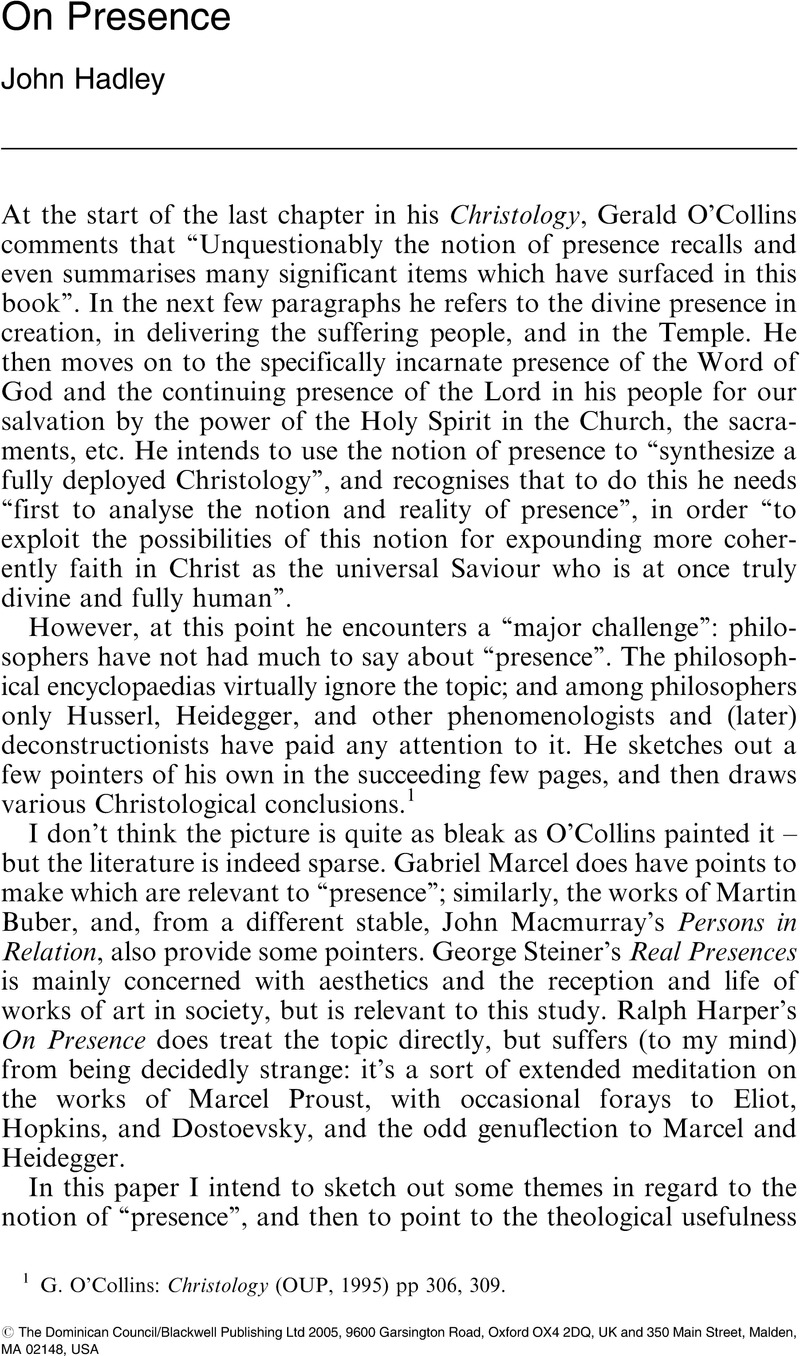Article contents
Abstract
An abstract is not available for this content so a preview has been provided. Please use the Get access link above for information on how to access this content.

- Type
- Original Articles
- Information
- Copyright
- Copyright © The Dominican Council/Blackwell Publishing Ltd 2005
References
1 O’Collins, G.: Christology(OUP, 1995) pp 306Google Scholar, 309.
2 cf Macquarrie: Existentialism p 14f.
3 T.E.Lawrence: Seven Pillars of Wisdom p 327
4 cf K.T.Gallagher: The Philosophy of Gabriel Marcel, pp 23–4
5 G. Marcel: The Mystery of Being I, p 207f; Presence et Immortalité p 188.
6 T. Sheehan: “Heidegger” in Routledge Encyclopaedia of Philosophy(ed. Edward Craig) vol IV pp 310–1.
7 G. Steiner: Real Presences, pp 119f
8 cf M. Grimer: Making Marriage Work pp 16–17, 78ff
- 1
- Cited by


